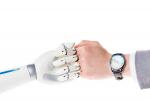CHICAGO — In a personal services industry like dry cleaning, the human touch is the foundation of doing business. But as technology improves and customers increasingly want more flexible hours and experiences, automated processes are starting to make inroads in ways not considered just a few years ago.
Automated kiosks, lockers, apps, notifications and more are changing the way cleaners do business. But how can cleaners balance the convenience and other benefits of automated service with getting to know their customers on a personal level?
Opening Up to Possibilities
For Gary Maloney, president and owner of Nu-Yale Cleaners, headquartered in Jeffersonville, Indiana, and serving the Louisville metro area, the pandemic opened his eyes to see what automation had to offer.
“We put in some lockers just because of the weird world,” he says, “and after that, we added some kiosks.”
Nu-Yale now has five kiosk locations in its 14-store operation.
“Those each have a mag lock we put on the door that opens at 5 a.m. and locks at 10 p.m.,” he says. “In the time between, you can come in and drop off and pick up. We staff it from about 10 a.m. to 6 p.m. So, we can have just one person there to mark the clothes while having a presence when a customer wants to come in.”
Andrew Rivkin, owner of Embassy Cleaners in Westchester County, New York, has three locations, along with routes that make 900 stops daily. He’s added a kiosk system in the lobby at his Scarsdale location.
“That area is a very upscale market where there is a desire to have that personalized touch,” he says. “So, in this location, we also have a front counter that is attended Monday through Friday, 9 a.m. to 6 p.m., and Saturdays, 9 a.m. to 5 p.m., so there’s ample opportunity for our customers to receive that personalized service with face-to-face interaction with one of our CSRs.”
Maggie Fox, owner of Fox Cleaners in Tulsa, Oklahoma, put a kiosk system in the company’s sole location — more than 75% of the company’s business comes from its extensive route service — and was surprised by the customer reception.
“We’ve had some people actually go off the route service and prefer to use the kiosk,” she says, “so that’s been a nice balance.”
While Fox’s kiosk system has been installed for about a year, she’s embraced other automated systems.
“We have a mobile app that we’ve used for about four years, which is really helpful for our customers to track their orders and get notifications,” she says. “We’ve also automated all of our text and email updates on their pickup, delivery and order status.”
The Personal Touch
Cleaners who don’t want to see their service looked at as a commodity — where customers take their business to the lowest-priced cleaner — understand that building a relationship with the customer is key. When it comes to automation, finding that balance between personalization and faceless-but-easy accessibility can be tricky.
“Metalprogetti, who manufactured our system, was strongly recommending that we go 100% automated at this location,” Rivkin says, “and I was seriously considering it, because there are certainly some benefits to having a totally automated location without having to incur the cost of staff operating this process.”
Keeping that crucial balance in mind, however, made him reconsider.
“I ultimately decided to also put in the tended front counter in order to be available for our clients and maintain the personal touch. We have a discerning clientele with high expectations, and we provide a high level of personal service, which our pricing reflects. So, I felt it was important to have staff available on-site to personally meet with our clients, if that is the type of interaction they prefer.”
“Initially, we were concerned about losing that human touch,” Fox says, “but we took every effort we could to ensure that the automation that we brought in was complementing, rather than replacing, the human interaction.
“The kiosks and lockers make all our transactions really easy and simple, but our staff is still available during our business hours to address any questions, give advice and assist with more personalized service. So, we think that blend really allows the customers to enjoy the efficiency, but not sacrifice that human connection, which is who they know us to be about.”
Advancements in technology, Maloney says, have made this type of system much more attractive than it was just a few years ago.
“We put in a kiosk about 10 years ago and we had a small percent of people who used it — they liked the hours,” he says. “That system just wasn’t ready for prime time, though. Today, anybody can walk up and sign up as a new customer — you don’t have to put your credit card on file — so it’s basically accessible to anybody. Ten years ago, that wasn’t true, and it wasn’t that great of a success. The technology has improved, and people have gotten more used to using things like this.”
Come back Tuesday for Part 2 of this series, where we’ll look at a crucial need for dry cleaners looking to increase automation: Customer acceptance.
Have a question or comment? E-mail our editor Dave Davis at [email protected].


























